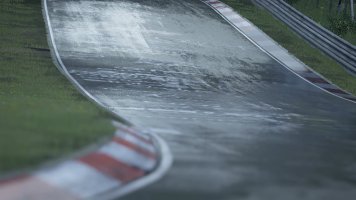Seriously. If I go at the curbs in a simulator (or my real car for that matter) I lose grip and cannot hold a curve. Yet at the same time it seems to be a clear win in current F1 to hit the curbs everywhere.
How do they do that?
Do they make their entire suspension setup subordinate to the curb-raiding needs?
I wonder how the math works out with centrifugal force, higher speed, more downforce. Maybe increasing the curve radius by that much is making a bigger difference than I think. Time to get some paper...
How do they do that?
Do they make their entire suspension setup subordinate to the curb-raiding needs?
I wonder how the math works out with centrifugal force, higher speed, more downforce. Maybe increasing the curve radius by that much is making a bigger difference than I think. Time to get some paper...










